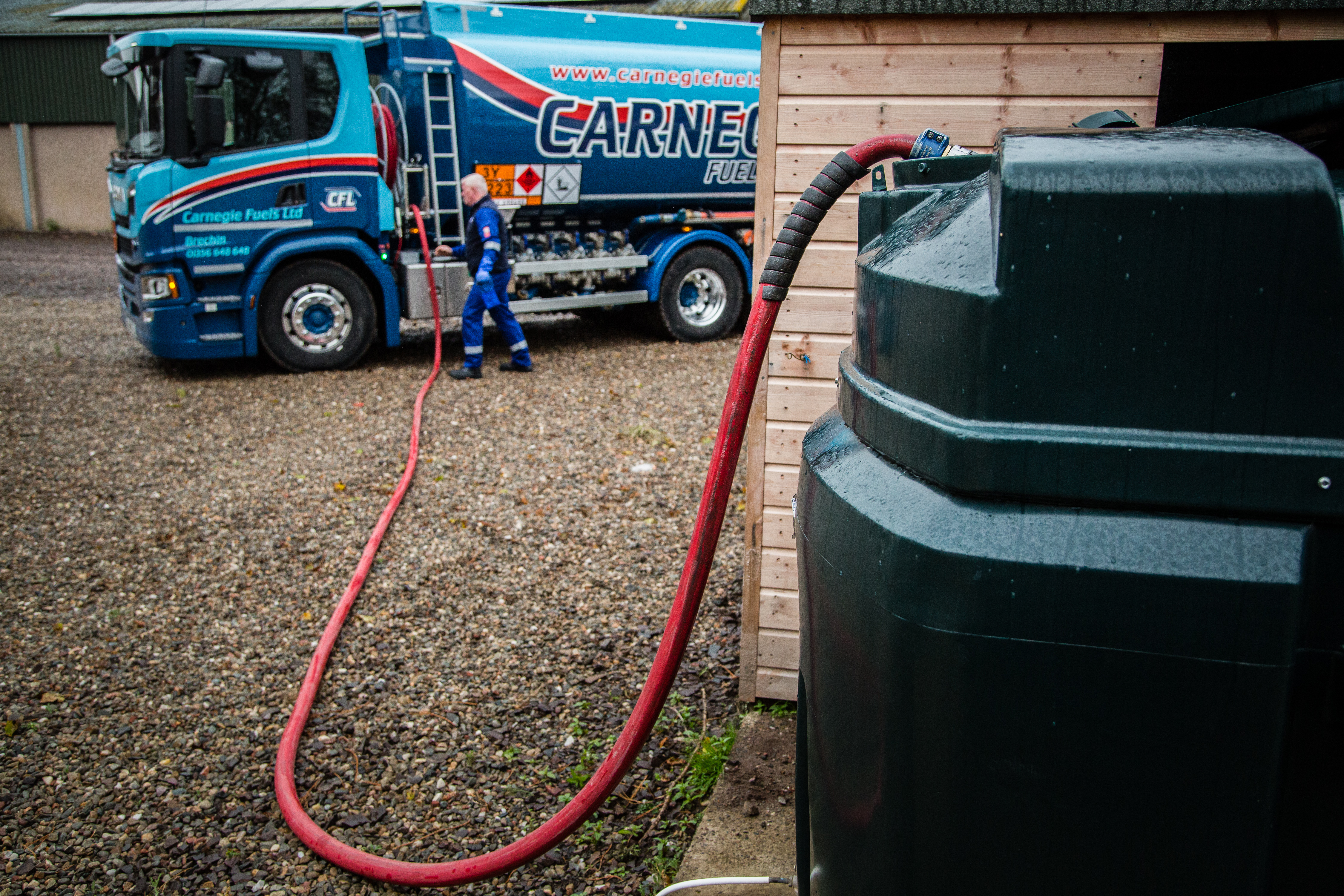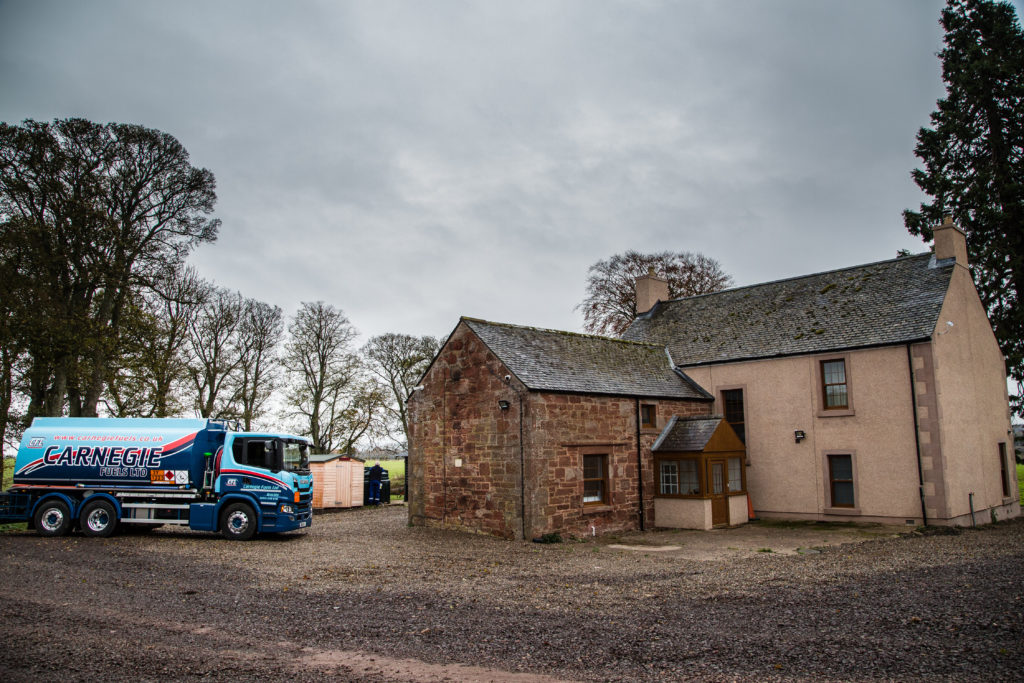When you are thinking about replacing your oil tank or installing a new one, the first thing that usually comes to mind is how you can disguise it or locate it somewhere discreet. There are however also safety implications you need to consider.
Figuring out the best place to put your tank can be a technical minefield. There’s lots of things you need to consider in order to ensure your tank is in the safest and most effective position on your property. This article will simplify it down and give you some advice on the best position for your heating oil tank.
5 Considerations when deciding on the location for your new oil tank
 #1 how safe the oil tank location is
#1 how safe the oil tank location is
The first and most important thing to consider is the how safe your location is for your tank. Although it is unlikely your tank will cause a fire, it’s important you take precautions to reduce the risk. This is your home and family that we are talking about so certainly not one for shrugging off.
OFTEC trade association ensure the safety of the oil and heating industry within the UK. They have laid out guidelines of things you must follow in order for your tank to be legal and safe.
Your number one priority is ensuring your tank is stored away from a fire or a heat source.
They should also be:
- 1.8 metres away from non-fire rated eaves of a building or non-fire rated buildings such as garden sheds.
- 1.8 metres away from openings such as doors or windows in a fire rated building such as a brick-based house or garage.
- 760 millimetres away from any non-fire rated boundaries such as a wooden fence. (Non-fire rated means materials or items that haven’t been tested or proven to reduce or inhibit fire spread.)
- 600 millimetres from any foliage.
If you find that you cannot secure your tank at the recommended distances from these materials you need to ensure you place a protective barrier around the tank, that will last at least 30 minutes in the event of a fire.
#2.The environment you want to position your oil tank in.
Deciding on whether you want your oil tank indoors, outdoors or underground can make the biggest difference to how practical and effective the tank is for your home. However, it can be confusing as all the options have their benefits. It’s important to understand the difference the placement of your tank can have before deciding what choice is best for you. Although depending on your type of tank and its size this may be determined for you already.
Indoor Oil Tanks
Storing your tanks indoors means you don’t have to worry about them being exposed to the elements such as extreme temperature or snowfall. Major temperature swings can cause issues such as condensation on the inside of the tank which can lead to rusting or corrosion. So, storing your tank indoors can mean it lasts longer as it is better protected. Another benefit is that your tanks are more protected from vandalism and theft.
The disadvantages of having an indoor tank is that you must have a large enough room to store it safely and it must be . You also need to secure the tank to a support base with a drip tray to protect your home from any potential spills. However, if your oil tank is professionally installed there should be no need to worry about leakage or smells inside your home.
Outdoor Oil Tanks
The advantages of outdoor tanks is that they are considered to be safer than your indoor tanks as the distance from your home and family members provides that extra layer of protection. It also means that should you need a repair or a top up, they are easier to access.
The fear could be though that an outdoor tank could ruin your garden view, however if they are properly installed in a tucked away spot they can be less noticeable than you would expect.
The disadvantages of outdoor tanks are that due to being exposed to the elements, they are more prone to rusting or corrosion which can shorten the life span of the tank. It can also lead to leakage which can be expensive to clean up.
Underground Oil Tanks
If you’re still worried about the tanks impact on the look of your home but prefer not to have it in your utility room or basement, an underground tank may be a good option for you. However, if you are considering this, it is important to keep in mind that installation costs will be far higher due to the different oil tank specification & the work required to position it. It is also much harder to maintain your tank and if there was a spillage it can be challenging to address. You will also need to consider if there is space underground for the tank, without disrupting any existing pipe work.
#3 Ease of access for deliveries
Most homes require two oil deliveries each year, depending on their oil tank capacity. Although most fuel suppliers will try their best to accommodate your location, it is worthwhile thinking where they will position the truck and how the hose will run to the oil tank’s location. Does it frustrate you that your current oil tank location requires you to be home for access? If so perhaps it is time for a change.
#4 How easy it is to maintain
Your oil tank & boiler system should be checked regularly by an OFTEC-qualified heating engineer, this requires ease of access and clear visibility to its full construction. It is also wise that as a home owner you take reasonable care to keep it clear of debris and inspect it for cracks bulges or oil spots on the ground as they are indications that your tank is wearing and in need of replacement quick. For this reason consider making sure there is enough space to get a clear view on all sides of the oil tank.
#5 The impact of weather
Living in Scotland, weather is a daily conversation! When considering your oil tanks position it is wise to consider how you can minimise its impact. Positioning it away from guttering, and pools of rainwater will minimise its risk of corroding and therefore maximise the oil tanks life expectancy. Avoid positioning it flush against a wall as this can allow leaves and debris to collect in behind it, leading to rusting and decay of an oil tank. With a plastic oil tank this is less of a concern due to its material makeup, leading one if its key advantages over the original steel frames.
Summary: What is the best location for an oil tank?
It is likely you have have an ideal position already shortlisted, but are looking to ensure that you have thought everything through. We’d suggest using the considerations listed as a checklist so that you are confident that your oil tank location is both safe, discreet and practical.
Still not sure?
Speak to our oil tank installation specialist Ron and he’ll keep you right on track!
Related Links:
Oil tank installation


